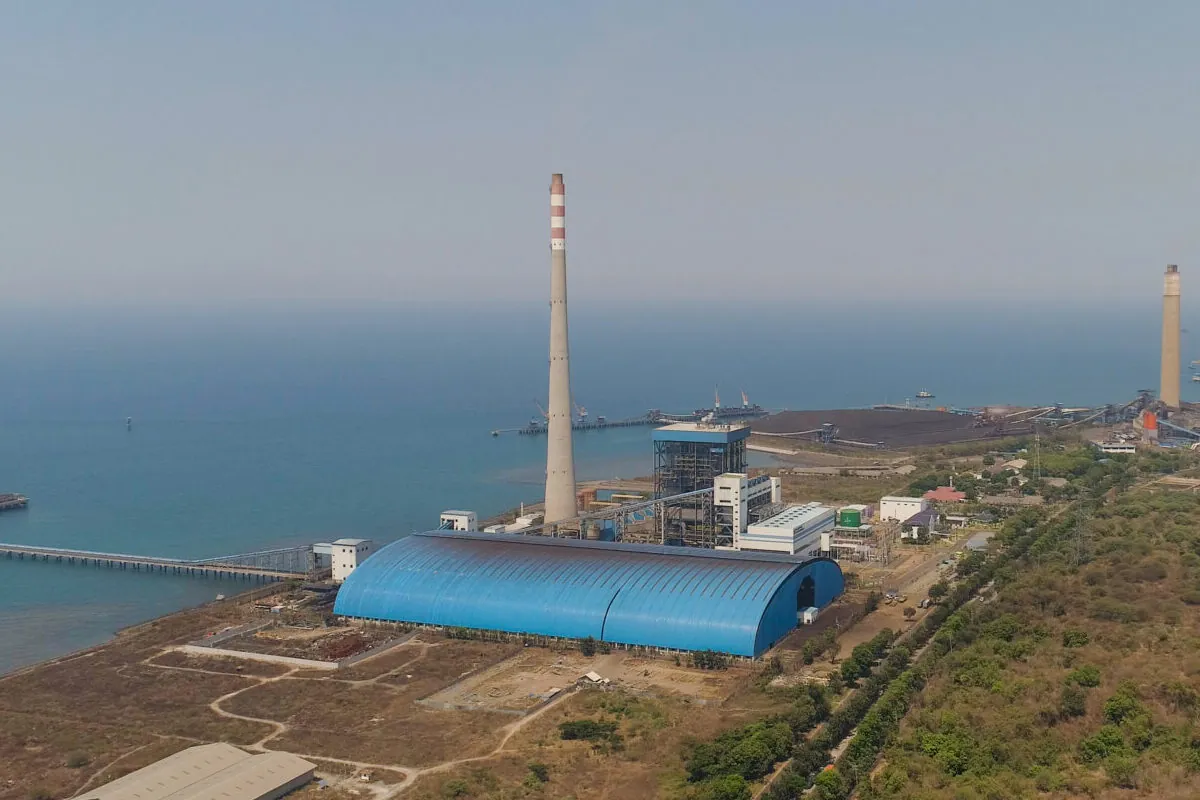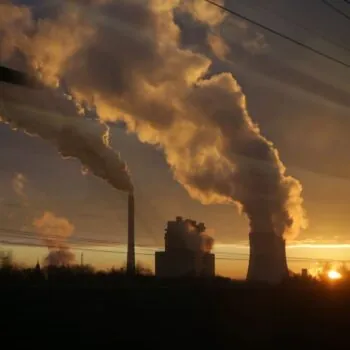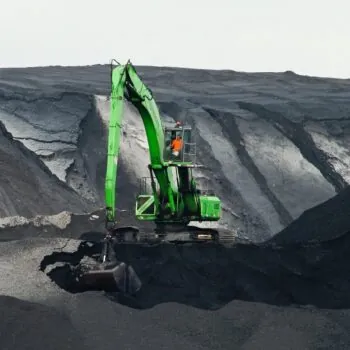Untuk terjemahan artikel ini dalam bahasa Indonesia, silakan klik di sini.
Để xem phiên bản tiếng Việt, hãy nhấp chuột vào đây.
Countries across Southeast Asia are considering the use of ammonia as a fuel for co-firing in coal power plants; an approach promoted heavily by Japan. However, ammonia co-firing is very costly; has limited feasibility for deployment at scale; and risks delaying the deployment of existing cost-effective, domestic and scalable renewable energy options. This explainer explores co-firing and its risks in Southeast Asia.
What is ammonia co-firing?
Ammonia co-firing involves replacing some of the coal used in power plants with ammonia, and then combusting that ammonia alongside coal to generate power. Ammonia co-firing is still an untested technology at scale; only a few projects in demonstration phase exist for 20% ammonia co-firing and higher ratios are not yet tested. The “co-firing ratio” refers to the energy content split; for example, a 20% co-firing ratio means ammonia replaces 20% of coal by energy content.
Ammonia is produced from hydrogen and is currently used directly as a fertiliser and chemical feedstock, although it can also serve as an energy carrier.
- Grey ammonia is derived from hydrogen produced by fossil gas or coal. More than 99% of ammonia produced today falls within this category.
- Blue ammonia is also derived from fossil fuels, with integrated carbon capture and storage (CCS). Less than 1% of ammonia is produced in this way.
- Green ammonia is produced through water electrolysis powered by renewable electricity. Only 0.01% of ammonia was produced with renewable power in 2021.
Ammonia is touted as a “low-carbon fuel” because it does not result in direct carbon emissions when combusted. However, at currently demonstrated ratios of 20% co-firing, the direct emissions reduction impact for a coal power plant will be minuscule. Significantly reducing emissions from a coal power plant through the use of fuel ammonia would require 100% ammonia mono-firing; a technology not yet possible, and likely highly infeasible at scale.
Overall, ammonia co-firing in the power sector is unlikely to help countries decarbonise in line with their own low emissions development strategies and the Paris Agreement. It would also not help countries in Southeast Asia improve their energy security as it would increase reliance on ammonia imports from an already stretched supply chain.
Why is ammonia co-firing being promoted in Southeast Asia now?
Countries in Southeast Asia are actively considering how to phase out coal power and achieve net zero emissions. In this context, the Japanese government and parts of its industry have an economic interest in promoting ammonia co-firing as a technology that can supposedly reduce emissions from young coal plants across Southeast Asia without retiring them.
This promotion, taking place through high-level vehicles like Japan’s Asia Zero Emissions Community (AZEC) and the Asia Energy Transition Initiative (AETI), has facilitated several dozen MoUs between Japanese industry players and utilities in Indonesia, Thailand, the Philippines and Malaysia to test the feasibility of co-firing. In Indonesia for example, Japanese heavy industry giant Mitsubishi Heavy Industries is studying co-firing at the Suralaya coal plant with the state utility PLN; in Vietnam, the long-term power development plan includes intentions to pursue ammonia co-firing; and in Malaysia, the 2023 National Energy Transition Roadmap now includes references to plans for ammonia co-firing.
The Ministerial Statement of the 2023 ASEAN Ministers on Energy Meeting Plus Three (ASEAN Member States plus Japan, China and Korea) encourages the deployment and utilisation of ammonia. However, the ASEAN Ministers on Energy Meeting statement refrains from mentioning ammonia, a sign that it is recognised as a controversial option.
The bottom line is that ammonia co-firing carries major risks and is unlikely to deliver energy security and affordability benefits for power sector transitions in Southeast Asia. Efforts by Japan to export this risky and expensive technology to countries in Southeast Asia risk locking the region into stranded assets and dependency on imported fuels; risks which investment in domestic renewable resources would avoid.
What are the risks of ammonia co-firing?
Ammonia co-firing has several limitations and risks:
Ammonia is more expensive than coal on an energy-equivalent basis, and more expensive than renewable technologies. In Indonesia, the Philippines, Malaysia and Thailand, TransitionZero estimates that replacing coal with 20% ammonia co-firing is up to four times more expensive than replacing it with solar or wind power per tonne of CO2 avoided. In Vietnam, BloombergNEF estimates that procuring ammonia could cost seven to nine times more than coal in 2030.
Betting on co-firing risks delaying the deployment of clean, low-cost, domestic and scalable alternative solutions, like wind and solar, which present far more cost-effective, reliable routes to net-zero emissions for Southeast Asia. IRENA modelling shows that Southeast Asia has vast renewable resources and that, with significantly upscaled investment and support, a majority renewables-based power system is feasible, and will bring economic opportunities.
Pursuing ammonia co-firing would require sourcing large amounts of ammonia, which increases energy security risks from import dependency on projected future hydrogen and ammonia exporters such as Australia and countries in the Middle East. For countries like Indonesia and Vietnam that are planning to produce green ammonia domestically, there is little value in using it in the power sector. Using renewable electricity to produce hydrogen, then using more renewable power to convert the hydrogen to ammonia, and finally burning that ammonia to produce power, is a costly, slow and very inefficient way to improve self-sufficiency in energy, compared to using renewable resources directly to generate power.
Ammonia co-firing remains a nascent technology, with only a 20% ratio trialled so far, and not yet commercially deployed. The feasibility of achieving more than 50% ammonia co-firing, let alone 100% mono-firing which would be necessary to fully eliminate direct emissions from coal plants, is unproven both commercially and technically. Betting on ammonia co-firing to reduce emissions from coal power risks prolonging the life of coal plants and failing to meet climate targets.
TransitionZero analysis shows that a coal plant in Southeast Asian countries with 20% ammonia will still have emissions five times higher than the levels aligned with the IEA’s Net Zero scenario for 2030. Moreover, the overall lifecycle emissions of the co-fired coal power plant may even increase if the ammonia used is produced from fossil fuels. For example, grey ammonia produced from unabated coal contains embedded emissions that are equivalent to double the emissions from the direct combustion of coal.
CREA analysis shows that co-firing ammonia with coal will increase air pollution substantially, creating major health risks. PM2.5 and toxic particles could increase by 67% at 20% co-firing rates, and by 167% at 50% co-firing rates.
What are better uses of green ammonia?
Using ammonia in coal co-firing would increase demand for green ammonia – the only zero-carbon ammonia type – putting pressure on limited supply chains and creating a costly trade-off between different economic sectors.
Green ammonia will be a limited, precious, and expensive resource for decades to come and will be vital for decarbonisation in industrial sectors that have fewer alternatives. Instead of using it for the power sector, where renewables present more mature, cost-effective and cleaner options for decarbonisation, countries in Southeast Asia planning to produce green ammonia would see greater benefits for cost-effective decarbonisation by targeting green ammonia use for these purposes:
Ammonia is one of the most emissions-intensive commodities produced by industry and is responsible for 1.3% of energy-related CO2 emissions. 70% of ammonia produced today is for fertilisers, the rest for industrial applications. Green ammonia will be essential to replace current grey ammonia demand and reduce emissions in these sectors.
Green ammonia can replace fossil fuels and reduce emissions in sectors where electrification may be challenging, such as heavy industry, including cement, steel or plastics, or shipping and aviation.
Prioritising green ammonia use for such heavy industry sectors could contribute to decarbonisation across Southeast Asia; whereas ammonia co-firing with coal risks being too expensive, too slow to deploy at scale, and too high in carbon intensity to help countries decarbonise their power sectors in line with the Paris Agreement.
For more information, see our briefing on the detrimental climate and economic impacts of co-firing ammonia with coal for electricity generation, or reach out to Hanna Hakko or Katrine Petersen.


